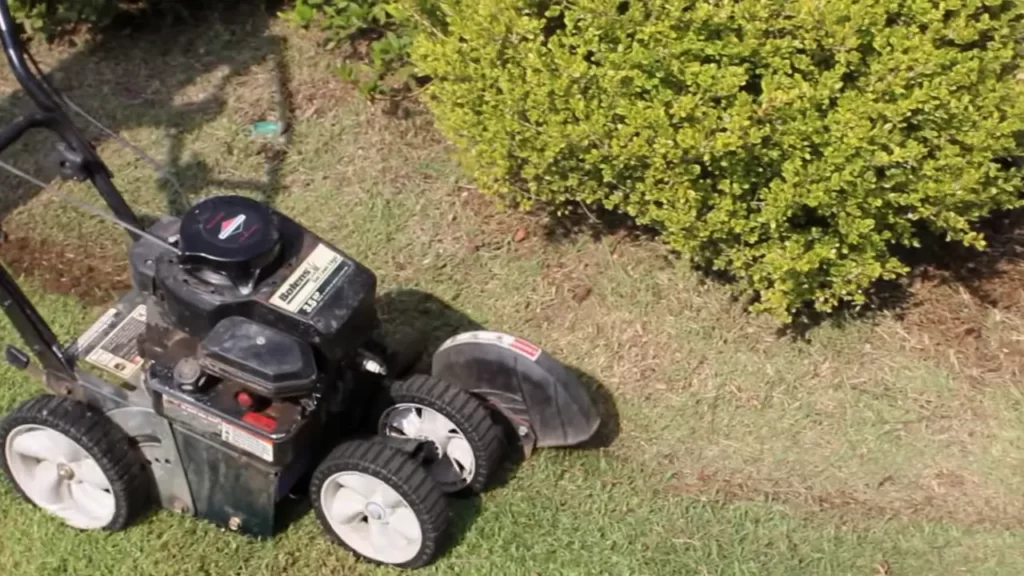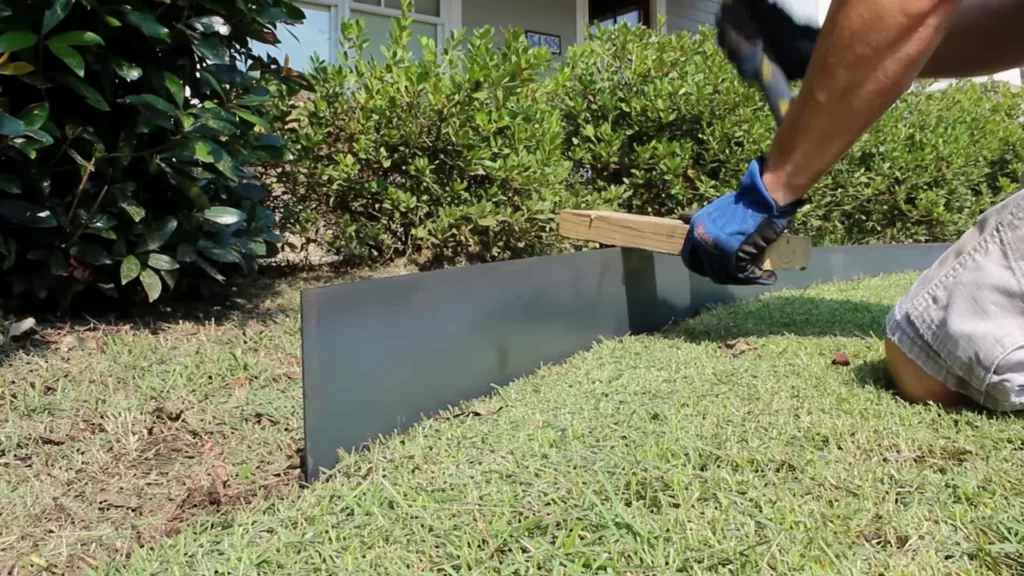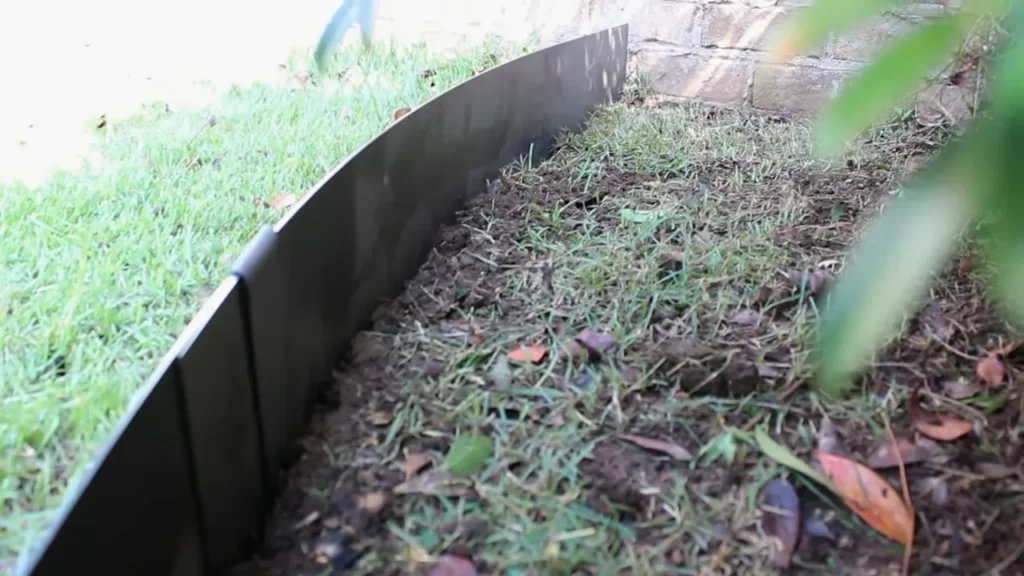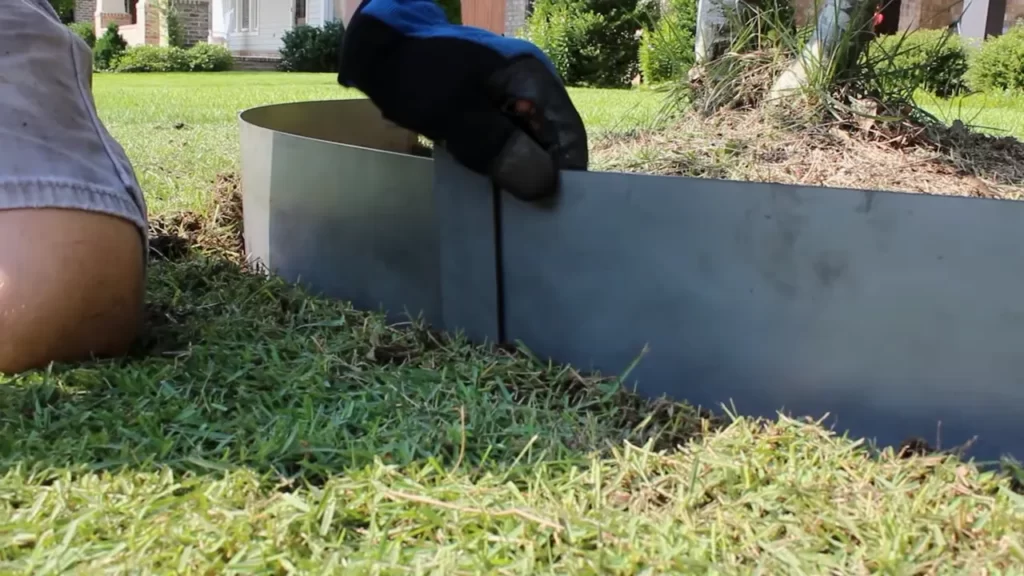o install steel landscape edging, first prepare the ground by marking the intended border and removing any existing edging or plants in the area. Then, dig a shallow trench along the marked line and insert the edging, ensuring it is level.
Finally, backfill the trench with soil, compacting it firmly against the edging. This will provide a secure and durable border for your landscaping project. Introducing steel landscape edging can greatly enhance the appearance and functionality of your outdoor space. Whether you want to separate different areas of your garden, retain gravel or mulch, or create defined edges around flower beds or walkways, steel landscape edging offers a robust and attractive solution.

Its sleek and versatile design allows for smooth curves, straight lines, and custom shapes – making it a popular choice among homeowners and professional landscapers alike. In this guide, we will walk you through the process of installing steel landscape edging step by step, ensuring your project is successful and aesthetically pleasing.
Why Steel Landscape Edging Is Essential For Your Garden
Enhancing the overall aesthetics of your garden space: Steel landscape edging adds a sleek, modern look to your garden, giving it a polished and well-maintained appearance.
Increasing the durability and longevity of your garden borders: Compared to other edging materials, steel landscape edging is highly durable and can withstand harsh weather conditions, such as extreme heat or heavy rain. Its strength helps prevent damage and deformation, ensuring that your garden borders stay intact for longer periods.

Creating clear boundaries between different areas in your garden: Steel landscape edging provides a clear separation between your flower beds, grass, and walkways. This helps prevent the intrusion of weeds or grass into other areas and maintains a neat and organized look for your garden.
Preparing Your Garden For Steel Landscape Edging
Assessing the terrain and layout of your garden is the first step in preparing for the installation of steel landscape edging. Take the time to carefully study the area to determine the best route for the edging. Look for any slopes, curves, or obstacles that may affect the installation process. Clearing the area is crucial to ensure that the edging can be installed properly. Remove any existing edging materials, such as plastic or wooden borders, before proceeding. Once the area is clear, measure and mark the desired route for the edging. This will help guide the installation process and ensure that the edging is placed in the right position. By taking these initial steps, you can prepare your garden effectively for the installation of steel landscape edging.
Step-by-step Guide To Installing Steel Landscape Edging
Installing steel landscape edging is a great way to enhance the look and functionality of your outdoor space. By following a step-by-step guide, you can easily achieve professional results. The first step is to choose the right type and size of steel landscape edging that suits your needs and preferences. Once you have selected the edging, you will need to dig a trench along the desired border. It is important to ensure the trench is deep and wide enough to accommodate the edging.

Next, carefully place the edging into the trench, making sure it is level and aligned properly. Use stakes or spikes to secure the edging firmly in place, ensuring it remains stable and upright. If you are installing multiple sections of edging, connect them together using the appropriate connectors or fittings, ensuring a seamless and continuous look.
Finally, backfill the trench with soil or gravel, compacting it around the edging to provide additional stability and support. This will help keep the edging in place and prevent any shifting or movement.
Maintaining And Caring For Steel Landscape Edging
To maintain your steel landscape edging, regular cleaning and removal of debris is essential. This will help to prevent any blockages or damage to the edging. Inspecting the edging periodically is also important to identify any damage or rust issues. If you notice any problems, it’s crucial to address them promptly to avoid further deterioration. Updating or replacing sections of the edging may be necessary if they become damaged beyond repair. By staying diligent and taking these steps, you can ensure that your steel landscape edging remains in optimal condition, enhancing the aesthetic appeal of your outdoor space.
Different Design Options And Styles For Steel Landscape Edging

Steel landscape edging offers a variety of different design options and styles to enhance your outdoor space. One of the main advantages of steel edging is its flexibility, allowing it to be easily customized to incorporate curves, corners, and straight lines. This versatility gives you the freedom to create unique and eye-catching edging designs and patterns.
In addition to its design flexibility, steel landscape edging also allows you to choose from a range of finishes and colors to complement your garden. Whether you prefer a rustic, weathered look or a sleek, modern finish, there is a steel edging option to suit your style.
Furthermore, steel landscape edging can be combined with other materials such as gravel, mulch, or pavers to create a visually appealing and cohesive landscape design. By using steel edging alongside these materials, you can define paths, flower beds, and other garden features with precision and durability.
Frequently Asked Questions Of How To Install Steel Landscape Edging
How Do You Install Landscape Steel Edging?
To install landscape steel edging, follow these steps: 1. Prepare the area by removing debris and marking the desired edge line. 2. Dig a trench along the marked line, ensuring it is deep enough to accommodate the steel edging. 3. Place the steel edging into the trench and secure it with stakes or connectors as instructed.
4. Backfill the trench with soil, compacting it to provide stability. 5. Finally, trim any excess edging and smooth the edges for a professional finish.
How Do You Secure Steel Edging?
To secure steel edging, follow these steps: 1) Dig a trench where you want to install the edging. 2) Place the edging in the trench and make sure it’s level. 3) Anchor the edging by pounding metal spikes or stakes through the holes.
4) Backfill the trench with soil, compacting it around the edging. 5) Repeat the process for each section of edging.
Is Metal Edging Easy To Install?
Metal edging is easy to install. It requires minimal effort and can be done quickly. Just follow the instructions provided, and you’ll have a professional-looking landscape in no time.
Conclusion
Installing steel landscape edging is a straightforward process that can enhance the appearance and functionality of your outdoor space. By following the steps outlined in this blog post, you can achieve seamless borders that define your landscape and prevent grass and weeds from encroaching onto your pathways and garden beds.
With the right tools and a bit of patience, you’ll be able to enjoy the benefits of steel landscape edging for years to come. Take the first step towards transforming your outdoor area by installing steel landscape edging today.
